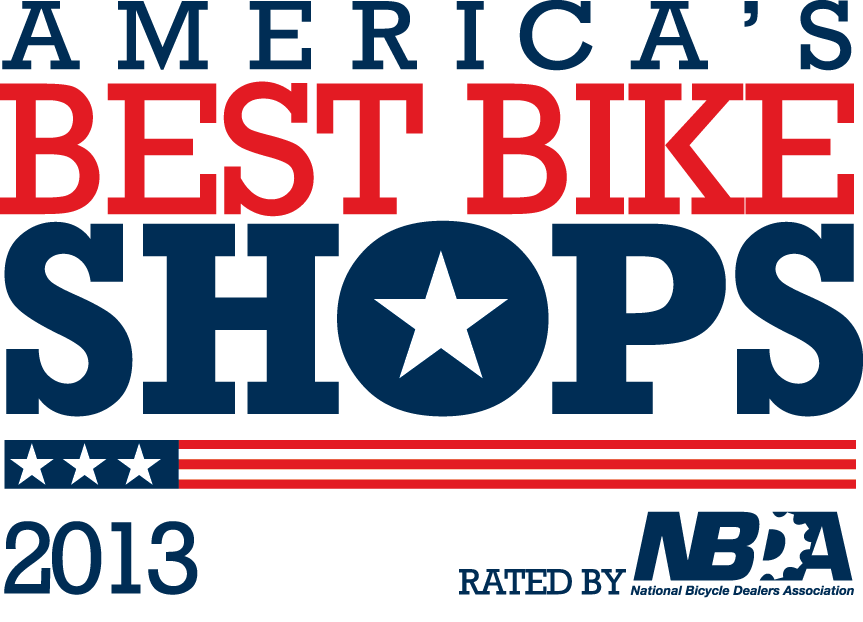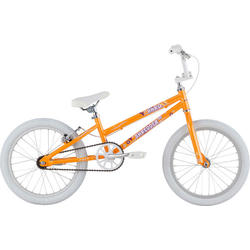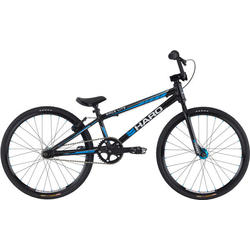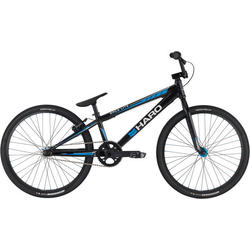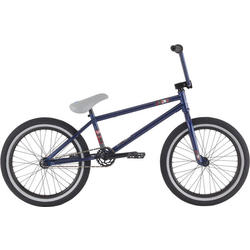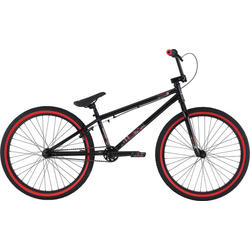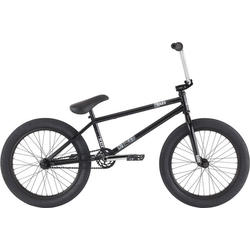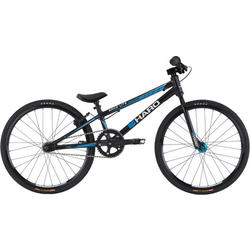|
Haro Shredder 18 - Girl's - 2016$199.99
|
Haro Race Lite Junior - 2016$539.99
|
Haro Race Lite Pro 24 - 2016$609.99
|
Fitbikeco Long 1 - 2017$399.99
|
Haro Interstate - 2016$549.99
|
Haro Downtown 24 - 2016$359.99
|
Haro Plaza - 2016$659.99
|
Haro Race Lite Mini - 2016$539.99
|
You couldn't pick a better time to shop for a new BMX bike. Today, more manufacturers offer more models than ever in a wider variety of price points. And BMX frames and components are lighter and stronger than ever before. Color schemes are customizable so that you can create a unique ride that expresses your style. In fact, there are so many attractive choices today in BMX, that if you just walked into our store, you might be overwhelmed. That’s why we’re here to help!
Answer These Questions
Before visiting our showroom, define yourself a bit. Consider how you'll use your new BMX new bike once you get it. And ask yourself a few questions to figure out what model's right for you.
- Are you new to BMX?
- Do you want to race?
- Are you interested in riding park and ramps?
- Are you looking for cruising around town and riding street features?
- Do you want to clock airtime on the dirt jumps?
- Are you looking for something a little more forgiving and bigger than 20-inch wheel BMX bikes, but that maintains the same characteristics?
What's The Difference?
Because people often throw around the "BMX" term generically, it's important to understand that there are three different types of BMX bikes: the true BMX bike, the street/dirt-jump/park 20-inch bike, and the flatland 20-inch bike. Another term used for BMX is simply "20-inch" due to the fact that the wheels have a diameter of twenty inches.
| Type | Description | Features | Ideal Use |
| BMX | A light, nimble race bike | Thin, low-profile tires with a slightly knobby to slick tread pattern, strong rear V-brake. Slightly steeper head tube | Racing on a BMX track |
| Street/Dirt-Jump/Park | Sturdy versatile rigs that handle crashes and rough riding well | Knobby to low-profile tread pattern with wider tire, rear U-brake or brakeless, pegs and cable detangler | Dirt jumping, street and park riding, tricks and grinding |
| Flatland | Smaller frame/wheelbase, longer seatpost, zero-offset fork | Small frame geometry and specific components offer unique leverage for flatland tricks | Flatland trick riding |
| Cruiser | A light, nimble race bike |
The larger frame accommodates 24-inch wheels | A more forgiving race bike that is also good for tall, large riders and dirt jumping |
A cousin to the BMX bike is the cruiser. While it still offers a light, snappy feel and precise handling, it uses a larger frame that accommodates 24-inch wheels. It's slightly more forgiving and tall riders may find it more comfortable too. If you do plan to race, be aware that cruiser bikes race in their own separate cruiser-class category.
BMX Race Bikes
True BMX bikes started it all, back in the late sixties. They were knockoffs of motocross motorcycles and were designed for racing over jumps and around berms in the dirt. Pretty soon kids everywhere had them, racers or not.
BMX bikes are still designed for racing, although you don't have to race to enjoy their nimble and precise handling. They have 20-inch wheels, 2- or 4-piece handlebars, small seats, long cranks and strong rear hand brakes. The frames are light and sturdy, and the higher the price, the lighter they get.
BMX bikes are generally made of chromoly steel or aluminum. Chromoly frames are a bit heavier and more economical.
Aluminum frames are lighter and are often made of oversize or exotically shaped tubing. Besides weighing less, aluminum is also rustproof. So, if you scratch your frame, there's no need to rush to touch it up.
BMX race bikes have their brake mounts located on top of the seatstays (see photo, right). This enables running a more powerful-braking linear-pull brake. Notice also how the chainring is rather large. This helps distribute the pedal force over more chain links and is safer when you’re loading up the pedals with pressure waiting for the gate to drop at the start of a race.
| Size | Description | Fits |
| Mini/Micro | Low stand-over height, 130- to 145-mm cranks, 20 x 1 1/8-inch tires | 4 to 6 years old |
| Junior | Slightly larger frame than Mini, 145 to 160-mm cranks, 20 x 1 1/8- to 20 x 3/8-inch tires | 6 to 9 years old |
| Expert | Longer top tube than Junior, 160- to 170-mm cranks, 20 x 1.5- to 20 x 1.75-inch tires | 9 to 13 years old |
| Pro | "Full-size" frame, 175- to 180-mm cranks, 20 x 1.75- to 20 x 2.0-inch tires | 12 and up |
BMX race bikes also come in different frame sizes. Our chart shows the approximate fit based on rider age. Final fitting is best done in our store. Also, the Pro and Expert bikes are sometimes available in XL (Extra Long) sizes as well.
Dirt Jump, Street and Park Bikes
These 20-inch bikes are made of steel and are built sturdy, which means they're slightly heavier than racing BMX bikes. However higher-end models use superior grade steel and specially tapered tubes so they wind up being fairly light with excellent riding characteristics.
One feature you may find on park and street BMX bikes, but that’s prohibited on BMX race bikes, are pegs. These steel cylinders bolt onto your wheels and allow you to grind or stall on coping and rails. If you want to run pegs it’s a good idea to use a 14-mm rear axle which is beefier than the 3/8-inch axle on a race bike. This axle will better handle the forces exerted by the pegs.
You'll also find a slightly easier gear ratio on these bikes. Since you won’t be sprinting as fast as possible, this ratio is easier to pedal and kinder on your knees. You’ll also appreciate the smaller chainring in the park when you're dropping in on a vert wall or trying lip tricks and disaster airs. A smaller chainring is less likely to hang up on the coping (see photo, right).
In general the street/park 20-inch bike is a great option to go with if you’re just not sure what you want. You can always race this bike, just make sure to remove your pegs. And you can charge it at the dirt jumps, on ramps and in the street. It’s definitely the most versatile of the three styles.
Flatland BMX Bikes
The flatland bike is the most specialized of all the 20-inch bikes. The unique frame geometry and components generally keep it relegated to its natural terrain which, as you guessed, is flat land. This style of riding has been described as the breakdancing of biking — it is truly amazing. The riders are constantly in motion as they balance on their bike and manipulate it into different positions producing wild tricks.
In order to be able to move the bike into such precarious situations, a flatland frame is much smaller than a standard BMX frame. In turn the wheelbase is shorter, which allows the rider to whip the bike around easily. The top tube and down tube also have a unique styling that gives the rider extra clearance to move on the bike.
Notable component differences are the freecoaster hub and the zero-offset fork. A freecoaster hub allows the rear wheel to spin backward without engaging and turning the cranks. This allows the rider to roll any direction and maintain the same foot orientation — great for balance and tricks. And the zero-offset fork puts a direct line of pressure from the handlebars into the front-wheel axle. This creates an ideal balance point for the front end of the bike.
Flatland bikes run an array of brake setups. Most commonly you'll find both a front and rear U-brake. In this case, a cable detangler is necessary to keep the brake cable from winding around the frame when doing tricks like bar spins. However, there are some flatland riders that use only a front brake, a rear brake or no brakes at all.
You’ll also find that flatland bikes run four pegs, the crankarms are short, the seatpost is long and the tires are slick and inflated very high. As you can see, flatland 20-inch bikes have everything you need to pull off unique tricks back-to-back.
Component Comparison At A Glance
To simplify things, here's a chart showing the components you'll find on each type of BMX bike.
| Bike |
Brakes | Chainring | Crankarms | Fork/Cable Detangler | Rear Hub | Tires |
| BMX Race | Linear-pull brake, mounts on the outside of the seatstay | large | long | offset fork/no detangler | 3/8-inch axle, freewheel | low-profile, moderate knobs to slick |
|
Dirt Jump/Park/Street |
Rear U-brake or brakeless | small | long - medium | offset fork/possible cable detangler | 14-mm axle, freewheel or freecoaster | moderate knobs to knobby |
| Flatland BMX | Front and rear U-brake | small | short | zero-offset fork with cable detangler | freecoaster | slick |
Your BMX Headquarters!
We hope this guide helps you pick out a great new BMX bike. Feel free to surf around and kick some virtual knobbies on our website. And, please contact us if you have questions about anything in this article or anything else bicycle related.
Be sure to visit our store, too, where you can see all our BMX bikes, components and accessories up close and personal and take a test ride to actually try them out!
Thanks for reading and we look forward to serving you soon!
Top finds
- Casinos Not On Gamstop
- Migliori Siti Casino Online
- Siti Casino Non Aams
- UK Online Casinos Not On Gamstop
- Non Gamstop Casino UK
- Non Gamstop Casino UK
- Casino En Ligne Légal En France
- Non Gamstop Casinos Uk
- Casino Sites Not On Gamstop
- Non Gamstop Casino UK
- Casino Sites Not On Gamstop
- Gambling Sites Not On Gamstop
- сasinos Without Gamstop
- Casinos Not On Gamstop
- Siti Scommesse Italiani
- Best Online Casinos UK
- Gambling Sites Not On Gamstop
- Meilleur Casino En Ligne
- Non Gamstop Casino
- Casino Not On Gamstop
- Betting Sites Not On Gamstop
- Casino Non Aams
- Migliori Casino Online Italiani
- Sports Betting Sites Not On Gamstop Uk
- Bitcoin Casinos

